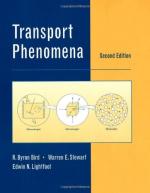|
This section contains 888 words (approx. 3 pages at 300 words per page) |

|
The cell is bound by an outer membrane that, in accord with the fluid mosaic model, is comprised of a phospholipid lipid bilayer with proteins--molecules that also act as receptor sites--interspersed within the phospholipid bilayer. Varieties of channels exist within the membrane. There are a number of internal cellular membranes that partially partition the intercellular matrix, and that ultimately become continuous with the nuclear membrane.
There are three principal mechanisms of outer cellular membrane transport (i.e., means by which molecules can pass through the boundary cellular membrane). The transport mechanisms are passive, or gradient diffusion, facilitated diffusion, and active transport.
Diffusion is a process in which the random motions of molecules or other particles result in a net movement from a region of high concentration to a region of lower concentration. A familiar example of diffusion is the dissemination of floral perfumes from...
|
This section contains 888 words (approx. 3 pages at 300 words per page) |

|


